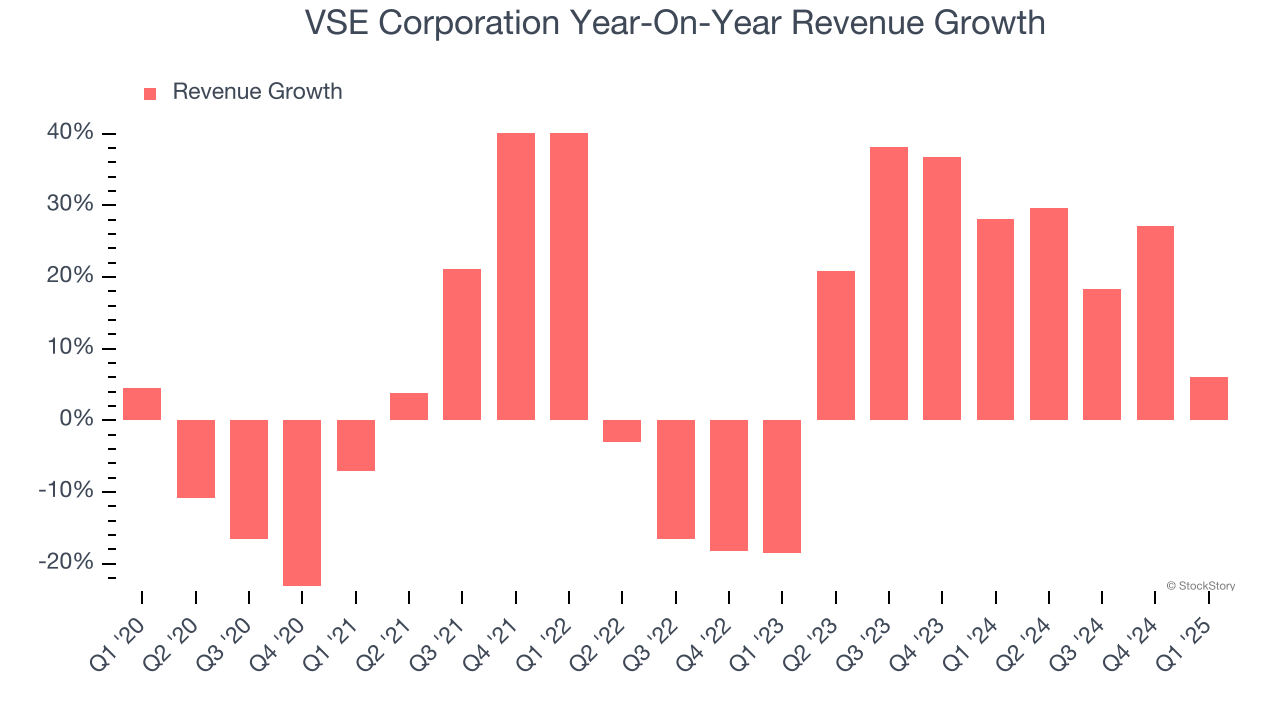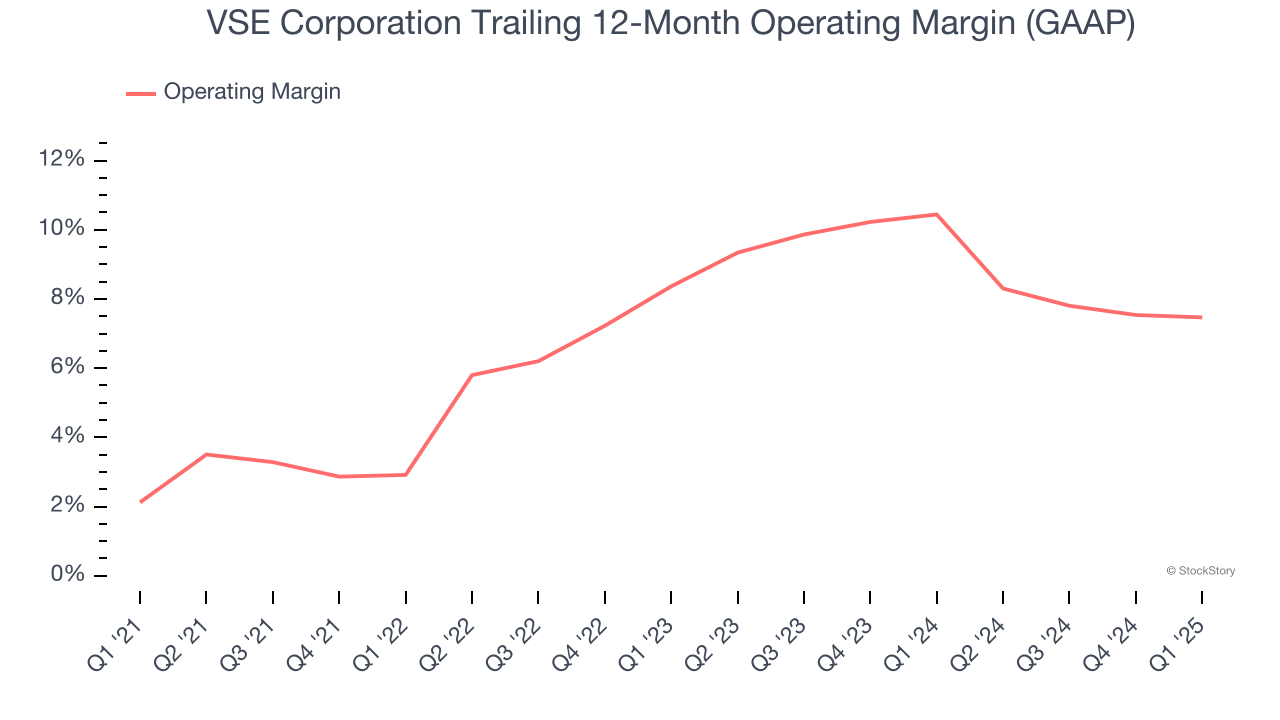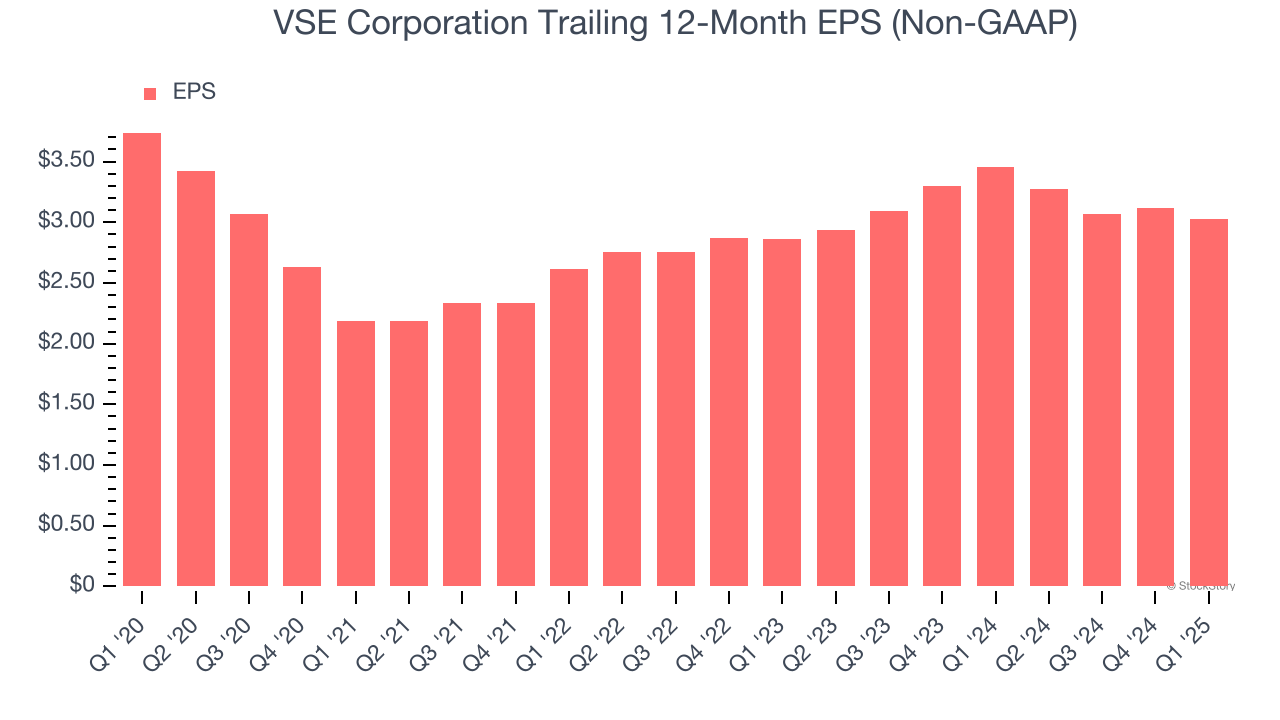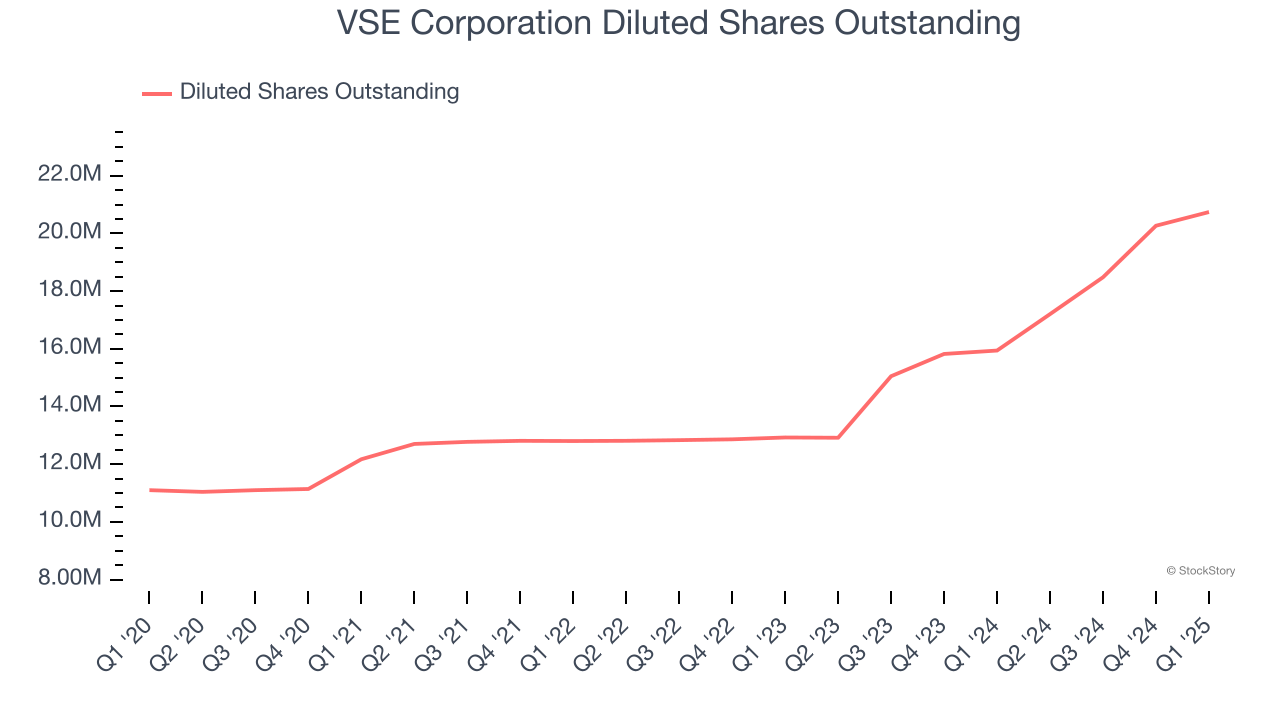
Aviation and fleet aftermarket services provider VSE Corporation (NASDAQ:VSEC) missed Wall Street’s revenue expectations in Q1 CY2025, but sales rose 6% year on year to $256 million. Its non-GAAP profit of $0.78 per share was 35.3% above analysts’ consensus estimates.
Is now the time to buy VSE Corporation? Find out by accessing our full research report, it’s free.
VSE Corporation (VSEC) Q1 CY2025 Highlights:
- Revenue: $256 million vs analyst estimates of $274.3 million (6% year-on-year growth, 6.7% miss)
- Adjusted EPS: $0.78 vs analyst estimates of $0.58 (35.3% beat)
- Adjusted EBITDA: $40.35 million vs analyst estimates of $32.6 million (15.8% margin, 23.8% beat)
- Operating Margin: 9.6%, in line with the same quarter last year
- Free Cash Flow was -$49.51 million compared to -$86.79 million in the same quarter last year
- Market Capitalization: $2.42 billion
"We proudly delivered record revenue and profitability in the first quarter and completed a critical chapter in our multi-year strategic transformation into a pure-play aviation aftermarket parts and services provider," said John Cuomo, President and CEO of VSE Corporation.
Company Overview
With roots dating back to 1959 and a strategic focus on extending the life of transportation assets, VSE Corporation (NASDAQ:VSEC) provides aftermarket parts distribution and maintenance, repair, and overhaul services for aircraft and vehicle fleets in commercial and government markets.
Sales Growth
Reviewing a company’s long-term sales performance reveals insights into its quality. Any business can put up a good quarter or two, but many enduring ones grow for years. Over the last five years, VSE Corporation grew its sales at a decent 7.6% compounded annual growth rate. Its growth was slightly above the average industrials company and shows its offerings resonate with customers.

We at StockStory place the most emphasis on long-term growth, but within industrials, a half-decade historical view may miss cycles, industry trends, or a company capitalizing on catalysts such as a new contract win or a successful product line. VSE Corporation’s annualized revenue growth of 25.3% over the last two years is above its five-year trend, suggesting its demand recently accelerated. 
We can dig further into the company’s revenue dynamics by analyzing its most important segment, Aviation. Over the last two years, VSE Corporation’s Aviation revenue (aftermarket parts, maintenance) averaged 43.5% year-on-year growth. This segment has outperformed its total sales during the same period, lifting the company’s performance.
This quarter, VSE Corporation’s revenue grew by 6% year on year to $256 million, missing Wall Street’s estimates.
Looking ahead, sell-side analysts expect revenue to grow 7.4% over the next 12 months, a deceleration versus the last two years. This projection doesn't excite us and implies its products and services will face some demand challenges.
Today’s young investors won’t have read the timeless lessons in Gorilla Game: Picking Winners In High Technology because it was written more than 20 years ago when Microsoft and Apple were first establishing their supremacy. But if we apply the same principles, then enterprise software stocks leveraging their own generative AI capabilities may well be the Gorillas of the future. So, in that spirit, we are excited to present our Special Free Report on a profitable, fast-growing enterprise software stock that is already riding the automation wave and looking to catch the generative AI next.
Operating Margin
Operating margin is a key measure of profitability. Think of it as net income - the bottom line - excluding the impact of taxes and interest on debt, which are less connected to business fundamentals.
VSE Corporation was profitable over the last five years but held back by its large cost base. Its average operating margin of 6.5% was weak for an industrials business. This result isn’t too surprising given its low gross margin as a starting point.
On the plus side, VSE Corporation’s operating margin rose by 5.3 percentage points over the last five years, as its sales growth gave it immense operating leverage.

In Q1, VSE Corporation generated an operating profit margin of 9.6%, in line with the same quarter last year. This indicates the company’s cost structure has recently been stable.
Earnings Per Share
Revenue trends explain a company’s historical growth, but the long-term change in earnings per share (EPS) points to the profitability of that growth – for example, a company could inflate its sales through excessive spending on advertising and promotions.
Sadly for VSE Corporation, its EPS declined by 4.1% annually over the last five years while its revenue grew by 7.6%. However, its operating margin actually expanded during this time, telling us that non-fundamental factors such as interest expenses and taxes affected its ultimate earnings.

Diving into the nuances of VSE Corporation’s earnings can give us a better understanding of its performance. A five-year view shows VSE Corporation has diluted its shareholders, growing its share count by 86.8%. This dilution overshadowed its increased operating efficiency and has led to lower per share earnings. Taxes and interest expenses can also affect EPS but don’t tell us as much about a company’s fundamentals. 
Like with revenue, we analyze EPS over a more recent period because it can provide insight into an emerging theme or development for the business.
For VSE Corporation, its two-year annual EPS growth of 2.8% was higher than its five-year trend. Accelerating earnings growth is almost always an encouraging data point.
In Q1, VSE Corporation reported EPS at $0.78, down from $0.87 in the same quarter last year. Despite falling year on year, this print easily cleared analysts’ estimates. Over the next 12 months, Wall Street expects VSE Corporation’s full-year EPS of $3.03 to grow 21%.
Key Takeaways from VSE Corporation’s Q1 Results
We were impressed by how significantly VSE Corporation beat analysts’ EBITDA and EPS expectations this quarter. On the other hand, its revenue missed significantly. Overall, we think this was a mixed quarter. The stock remained flat at $118.06 immediately following the results.
Sure, VSE Corporation had a solid quarter, but if we look at the bigger picture, is this stock a buy? What happened in the latest quarter matters, but not as much as longer-term business quality and valuation, when deciding whether to invest in this stock. We cover that in our actionable full research report which you can read here, it’s free.
